Verbundforschungsprojekte
Spitzenforschung über fachliche, organisatorische und geographische Grenzen hinaus. Unsere Forschenden setzen ihre Expertise in innovativen Verbundforschungsprojekten ein.
Mit einem international einzigartig holistisch-interdisziplinärem Ansatz erforschen die Wissenschaftler und Wissenschaftlerinnen wirkungsvolle Maßnahmen gegen mächtige und großskalige Cyber-Angreifer, die durch technische Expertise und breite finanzielle Ressourcen kritische Schäden anrichten können. CASA ist der Ort für bahnbrechende IT-Sicherheitsforschung in Deutschland.
Die Mitglieder des interdisziplinären Sonderforschungsbereiches untersuchen, wie sensorische Signale neuronale Karten generieren und daraus komplexes Verhalten und Gedächtnisbildung resultiert. Ziel ist die Anwendung einer systemorientierten neurowissenschaftlichen Strategie, um wesentliche Aspekte der sensorischen Verarbeitung zu erforschen.
Wir können lernen, dass früheres Wissen nicht mehr relevant ist und unser Verhalten darauf anpassen. Extinktionslernen beinhaltet sowohl ein Vergessen alter Information als auch einen neuen Lernprozess, der sich vom Ersterwerb unterscheidet und erheblich komplexer ist. Der SFB 1280 ntersucht die neuralen, behavioralen, edukativen, ontogenetischen und klinischen Mechanismen des Extinktionslernens.
In der Forschungsgruppe 2821 widmen sich Wissenschaftler:innen in neun eng verknüpften Teilprojekten der Szenariokonstruktion beim Abruf des episodischen Gedächtnisses. Dabei nutzen sie Methoden der experimentellen Psychologie, der Philosophie und der Computational Neuroscience.
Im Forschungskolleg SecHuman werden neben technischen Aspekten der IT-Sicherheit auch die Chancen und Folgen für Mensch, Gesellschaft und Kultur untersucht. Die Forschung findet in einem inter- und transdisziplinären Umfeld statt: Ein innovatives Tandemkonzept verbindet die Forschung aus einer technischen Disziplin mit der Forschung aus einer gesellschafts- oder geisteswissenschaftlichen Disziplin und ermöglicht praxisrelevante IT-Sicherheitsforschung
Heutzutage genutzte Verschlüsselungsverfahren lassen sich nicht gut skalieren und auf größere Datenmengen anwenden. So nehmen beispielsweise die Sicherheitsgarantien der meist verwendeten RSA-Verschlüsselung mit Anzahl der Benutzer und Chiffretexte linear ab. Ziel des Projektes ist die Entwicklung eines Werkzeugkastens für kryptographische Verfahren, die für große Datenmengen geeignet sind und deren Sicherheitsniveaus im laufenden Betrieb angepasst werden können.






